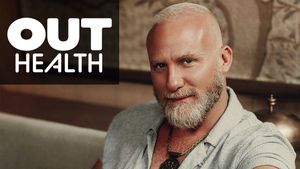Treatment GuideJust DiagnosedSex & DatingAfrican AmericanStigmaAsk the HIV DocPrEP En EspañolNewsVoicesPrint IssueVideoOut 100
CONTACTCAREER OPPORTUNITIESADVERTISE WITH USPRIVACY POLICYPRIVACY PREFERENCESTERMS OF USELEGAL NOTICE
© 2025 Pride Publishing Inc.
All Rights reserved
All Rights reserved
Scroll To Top
By continuing to use our site, you agree to our Privacy Policy and Terms of Use.
For the past decade we have been struggling to create and re-create anti-HIV regimens that contain three active drugs from the same three basic drug classes: nucleoside reverse transcriptase inhibitors, nonnukes, and protease inhibitors--with a little help from fusion inhibitor T-20 (Fuzeon) once it was introduced in 2003. Over time, regimens have failed in some experienced patients, and the number of patients without any viable treatment options has increased. In addition, in parts of the country up to 15% of newly infected patients have a virus already resistant to at least one drug class. But as we begin 2008 I feel like we are entering what future historians might call the golden age of anti-HIV medications. This era actually started two years ago with the second-generation protease inhibitors, darunavir (Prezista) and tipranavir (Aptivus). Then in August a new class of drugs called coreceptor blockers arrived with the Food and Drug Administration's approval of maraviroc (Selzentry). Barely two months later, another new class called integrase inhibitors debuted with raltegravir (Isentress). If all goes according to schedule, a second-generation nonnuke will be approved early this year. And if we are lucky, drugs farther up the pipeline--maturation inhibitors, monoclonal CD4 antibodies, and second-generation nucleosides--will prove successful as well. This optimism is reflected in changes made to the most recent treatment guidelines of both the U.S. Department of Health and Human Services and the International AIDS Society-USA. Prior guidelines admitted that the goal of maximal suppression of viral loads to below 50 might not be possible in patients with broad treatment experience. But these current guidelines have a goal of viral loads below 50 in all patients, regardless of past medication exposure. Based on studies of maraviroc and raltegravir, these goals seem possible. In separate studies patients who were already three-class resistant were randomized to the study drug or placebo plus an optimized background therapy. At 24 weeks the arm with the study drug had about twice the percentage of patients with undetectable viral loads compared to placebo. And if the study drug was combined with an optimized background therapy containing two or more active drugs, 60% to 80% of patients achieved undetectable status. In other words, having several new classes of drugs to which there is no resistance should get about 70% of our currently unsalvageable patients to undetectable viral levels. However, amid all this optimism, we need to remember that we must not squander this bounty of new drugs. Resistance will surely arise if we fail to patiently wait to create a regimen with three active components for each patient. Let's celebrate where we are but not forget where we have been. Bowers is an HIV specialist and board-certified physician in family practice, and he is a senior partner with Pacific Oaks Medical Group, one of the largest U.S. practices devoted to HIV care, in Beverly Hills, Calif.
From our Sponsors
Most Popular
Lexi Love comes out as HIV+ after Trump deletes federal resources
January 23 2025 11:23 AM
Grindr is reminding us why jockstraps are so sexy and iconic
May 02 2025 5:36 PM
BREAKING NEWS: Trump admin moves to end federal HIV prevention programs
March 18 2025 6:10 PM
Trump's orders prompt CDC to erase HIV resources
January 31 2025 5:29 PM
Celebrating Black History Month with our annual African American issue
February 01 2025 3:28 PM
Tyler TerMeer vows to continue to fight for health care for all
January 28 2025 3:00 PM
Discover the power of Wellness in your life
March 26 2025 12:41 PM
Plus: Featured Video
Latest Stories
BREAKING: Supreme Court rules to save free access to preventive care, including PrEP
June 27 2025 10:32 AM
Trump admin guts $258 million in funding for HIV vaccine research
June 03 2025 3:47 PM
500,000 Children at Risk: PEPFAR Funding Crisis
April 08 2025 3:51 PM
The Talk Season 5 premieres this spring with HIV guidance for the newly diagnosed
March 26 2025 1:00 PM
A camp for HIV-positive kids is for sale. Here's why its founder is celebrating
January 02 2025 12:21 PM
Ricky Martin delivers showstopping performance for 2024 World AIDS Day
December 05 2024 12:08 PM
Decades of progress, uniting to fight HIV/AIDS
December 01 2024 12:30 PM
1985: the year the AIDS crisis finally broke through the silence
June 26 2025 11:24 AM
VIDEO: A man living with HIV discusses his journey to fatherhood
June 10 2025 4:58 PM
HRC holds 'die-in' to protest Trump health care cuts
April 28 2025 2:11 PM
Broadway's best raise over $1 million for LGBTQ+ and HIV causes
April 03 2025 7:15 PM
Season 4 of The Switch on resilience & radical self-love returns this spring
March 26 2025 12:20 PM
Gerald Garth is keeping people of color happy and healthy through trying times
March 11 2025 3:38 PM
This long-term HIV survivor says testosterone therapy helped save his life.
December 16 2024 8:00 PM
Two right-wing Supreme Court justices signal they may uphold access to PrEP and more
April 21 2025 4:10 PM
Jess King is here to help you live your happiest, healthiest life yet
March 24 2025 4:35 PM
Plus nominated for 2025 GLAAD Media Award
January 22 2025 12:42 PM
'RuPaul's Drag Race' star Trinity K Bonet quietly comes out trans
December 15 2024 6:27 PM
AIDS Memorial Quilt displayed at White House for the first time
December 02 2024 1:21 PM
Trending stories
Recommended Stories for You














































































